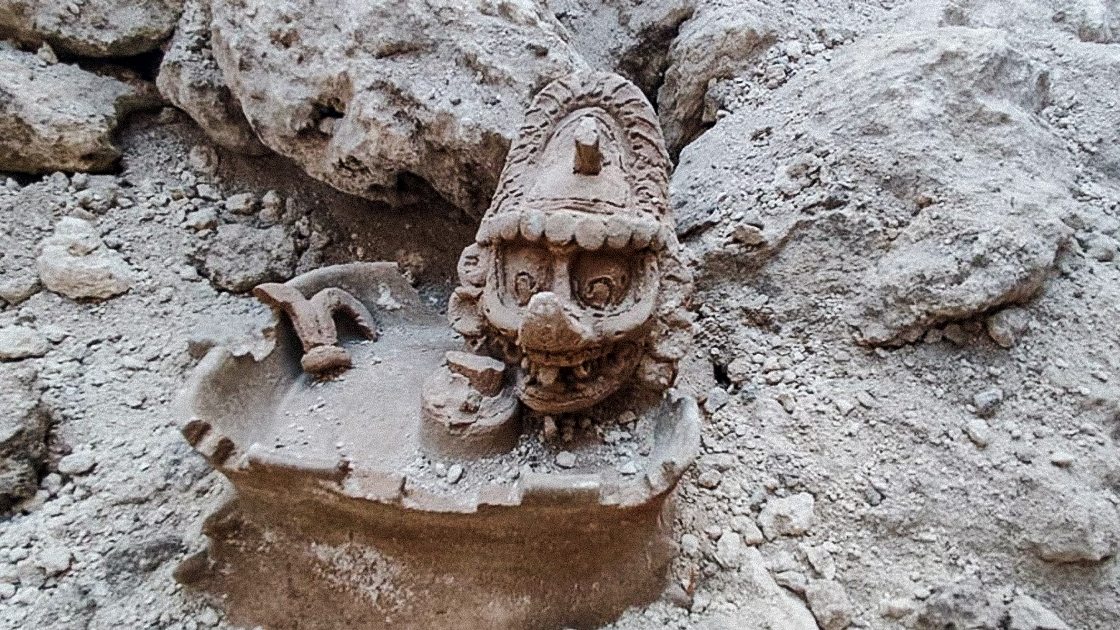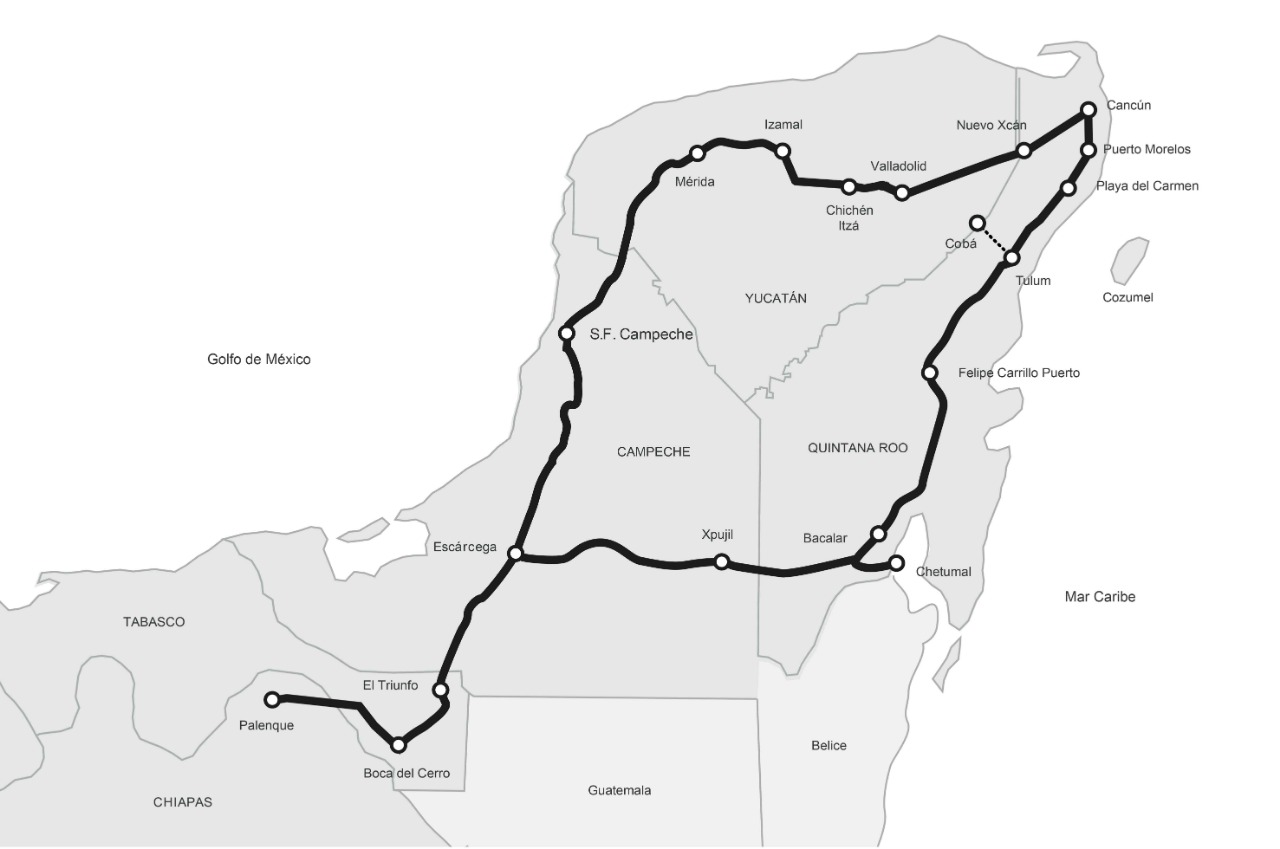Archaeologists working on the Maya Train route have made a remarkable discovery. While performing rescue work on section 7, they found a beautifully crafted stone sculpture of the Mayan god K’awil. K’awil is an important deity within the Mayan culture, often associated with lightning, serpents, fertility, maize, abundance, and royal lineage.

This discover has been hailed as a significant find, offering valuable insight into the beliefs and practices of the ancient Mayan civilization.
He has a zoomorphic skull, huge eyes, a long, upturned nose, and an attenuated snake foot. A torch, stone celt, or cigar, which generally emits smoke, emerges from his brow, while a snake leg depicts a lightning bolt. As represented on his stelae, Kawiil personifies the lightning axe boof the rain deity, and e monarch.
During President López Obrador’s morning news conference, Diego Prieto Hernández, general director of the National Institute of Anthropology and History (INAH), reported the finding.
“This finding is very important because there are few sculptural representations of the god K’awil; so far, we only know three in Tikal, Guatemala, and this is one of the first to appear in Mexican territory,” Prieto said.
“However, this god’s representation is more commonly seen in paintings, reliefs, and Mayan codices. This rare three-dimensional image was found on the head of an urn whose body shows the face of a different deity, possibly linked to the sun.,” writes Mexico News Daily.
AMLO was shown the sculpture during a trip to examine progress on section 7 of the Maya Train, which runs between Bacalar, Quintana Roo, and Escárcega, Campeche, according to Prieto.

He stated that archaeological rescue efforts are currently focused on sections 6 and 7 of the train’s path, with parts 1 to 5 finished between Palenque, Chiapas, and Tulum.
Work is still being done on complementary projects, such as the collection and cleaning of archaeological materials, their classification, and ordering, according to Prieto.
All this work should lead to an analysis of the vast information, preparation of academic reports, and a large international research symposium on the Mayan ọlaju, which will be organized for this year.
As of April 27, the INAH had registered and preserved as part of the Maya Train archaeological rescue project a 1,000-year-old Maya canoe at the San Andrés archaeological site near Chichén Itzá, an 8,000-year-old human skeleton in a cenote near Tulum, and a previously unknown archaeological site of over 300 buildings in Quintana Roo, dubbed Paamul II.
This significant project also includes 48,971 ancient buildings or foundations, 896,449 pottery fragments, 1,817 transportable artifacts, 491 human remains, and 1,307 natural features such as caves and cenotes.
The INAH is also evaluating the data at its Chetumal laboratory, which Prieto claims will fuel the study of Mayan civilizations for the next 25 years.
While the archaeological rescue process is thought to be progressing well, environmentalists continue to oppose the Maya Train, believing it will cause irreversible damage to the region’s unique ecosystems and subterranean lakes, according to Mexico News Daily.
Alaye siwaju sii: Mexico News Daily




